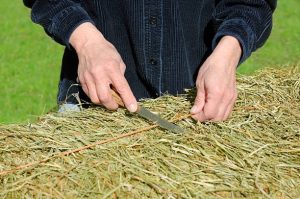There are many uses for www.unipak.com.au baling twine. It can break open hay bales, serve as a measuring tape, and even be used for human use. Aside from being used for baling, it can be used to make a hay net, a doormat, or a rug. Here are some of the more common uses for baling twine. You may be surprised at how many people use it! Let’s explore a few of them!
Biodegradability
 While sisal and cotton baler twine are both biodegradable, cotton twine is the least biodegradable twine choice. Sisal twine is a natural fibre that is resistant to rot and mildew. Solar-degradable twine is treated and lasts a lot longer than traditional twine. It also costs half as much as regular twine. Whether you choose cotton twine or sisal twine, biodegradability is important in your decision.
While sisal and cotton baler twine are both biodegradable, cotton twine is the least biodegradable twine choice. Sisal twine is a natural fibre that is resistant to rot and mildew. Solar-degradable twine is treated and lasts a lot longer than traditional twine. It also costs half as much as regular twine. Whether you choose cotton twine or sisal twine, biodegradability is important in your decision.
Cotton and sisal twine is biodegradable, but cotton twine is the most costly. You should purchase twine that is biodegradable and is not harmful to the environment. It’s also safer for livestock and farm implements and is made from renewable resources, such as sisal. You should look for a baler that uses sisal twine. Biodegradable twine is the ideal choice for those who care about the environment and are concerned about the safety of their equipment.
Colours
Baling twine comes in different colours for various purposes. This material comes in various colours to suit different people, crops, paddocks and years. Farmers should follow the colour-coding on the packaging to choose the right baling twine. Manufacturers of balers follow this colour-coding system and recommend specific colours for different conditions. The most popular twine is Baleguard, which is available in many colours.
Premium Black is the traditional small square twine, while coloured versions are available in different shades. The strength of the bale depends on the type of baler, and the amount of hay packed. Tensile strength is the main parameter of www.unipak.com.au baling twine, and a knotted rope has a higher knot strength than one without. Smaller knot strength is perfect for lighter bales. Another important number is tensile strength, which measures the rope’s ability to resist breaking under pressure. However, knot strength is reduced by about seventy per cent when a knot is used.
Strength
Compared to the lead rope, baler twine has a lower tensile strength than lead. As a result, farmers need stronger twine to pack the hay as tightly as possible. The strongest twine is a natural fibre with insect repellent treatment preferred over polypropylene twines. Natural fibre baling twine is also mildew and insect resistant. It is also easier to cut and install than polypropylene twine.
The tensile strength of baling twine depends on the type of twine and how much hay you are storing. This number is expressed in pounds per inch of twine. Single-ply balers generally have a knot strength between 110 and 325 pounds per inch. Larger square bales need knot strengths of 500 psi, which is available from some manufacturers. However, it is important to note the tensile strength of the twine before purchasing.
Cost
While sisal twine is generally the most common choice, solar-degradable twine is better. This twine offers greater stability, lower input costs, and a longer storage life before decomposition. In addition, solar-degradable twine takes 20 to 30 turns to wrap a bale. However, the increased time it takes to wrap a bale offsets the additional cost of this twine.
SICOR www.unipak.com.au baling twine are designed for stationary baling machines and are UL-listed for UV protection. It features a 550-lb knot strength and has 80% more grip than standard twine. Its ultra-grip technology helps prevent knot slippage during baling. The twine also features a high-quality, resilient design and is suitable for various baling applications. Its flexible design adapts to the various models of balers and can be purchased separately or as a set.
Time spent wrapping bales.
One method for efficiently curing hay is to wrap the bales individually. This method reduces space requirements for in-field storage but is less efficient when dealing with large numbers of bales. In the case of large-scale dairy or livestock operations, individual wrapping may be necessary. However, this information is for illustrative purposes only. The actual time spent wrapping the bales may differ from one farm to another.
Regardless of the method you choose, make sure that your bales are the right size for your wrapper. Most wrappers have an ideal length for bale size between 4 and 6.5 feet. Heavy bales tend to get heavier with time, causing holes and plastic tares problems. You may want to avoid bales that weigh over 1400 lbs. To prevent punctures, wrap the bales gently. Do not place them on rough surfaces, as these can puncture the plastic. Also, do not handle the bales without care as this can cause oxygen to enter, disrupting anaerobic fermentation.
